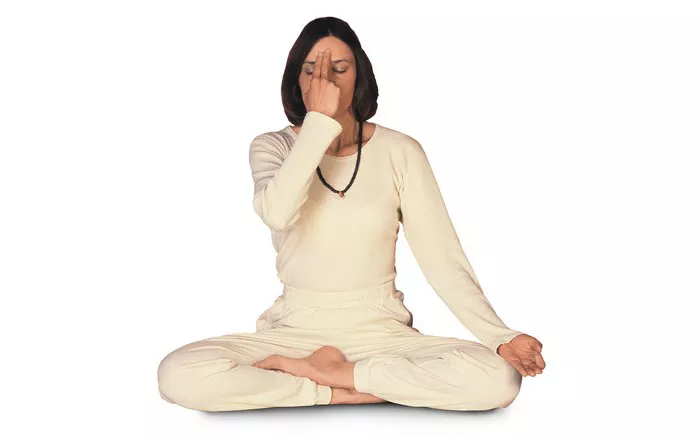Yoga, an ancient practice originating from India, encompasses a rich tapestry of poses, each with its unique symbolism and benefits. Among these is the Three-Legged Dog Pose, also known as Tri Pada Adho Mukha Svanasana in Sanskrit. This pose, like many others in yoga, carries profound origins and symbolism, while offering numerous physical and mental benefits. In this comprehensive guide, we delve into the depths of the Three-Legged Dog Pose, exploring its roots, its impact on the body and mind, variations to suit different levels, precise instructions for practice, and important precautions to ensure safe execution.
Origins and Symbolism
The Three-Legged Dog Pose traces its roots back to traditional Hatha Yoga texts, where it was mentioned as a variation of the Downward-Facing Dog Pose (Adho Mukha Svanasana). Its Sanskrit name, Tri Pada Adho Mukha Svanasana, breaks down as “tri” meaning three, “pada” meaning foot or leg, “adho” meaning downward, “mukha” meaning facing, and “svana” meaning dog. This pose is often interpreted as a representation of the journey towards balance and harmony in both the physical and spiritual realms.
Symbolically, the Three-Legged Dog Pose embodies the idea of reaching beyond limitations. The grounded hand and feet symbolize stability and rootedness, while the lifted leg signifies expansion, freedom, and reaching towards higher aspirations. This pose encourages practitioners to find balance between effort and surrender, strength and flexibility, as they navigate the interconnectedness of mind, body, and spirit.
Physical and Mental Benefits
Practicing the Three-Legged Dog Pose offers a plethora of benefits, both physical and mental. From enhancing flexibility to building strength, here are some of the key advantages:
1. Strengthens the Core and Upper Body: The pose engages the muscles of the arms, shoulders, chest, and upper back, helping to build strength and stability in these areas.
2. Improves Balance and Stability: Balancing on three limbs challenges proprioception and improves balance, coordination, and overall stability.
3. Stretches the Hamstrings and Calves: The extended leg in the pose provides a deep stretch to the hamstrings and calves, promoting flexibility in the lower body.
4. Opens the Hips and Shoulders: The extended hip of the lifted leg opens the hip flexors, while the rotation of the shoulders encourages mobility and flexibility in the shoulder joints.
5. Elevates Mood and Reduces Stress: Like many yoga poses, the Three-Legged Dog Pose promotes relaxation, reduces stress, and calms the mind, fostering a sense of mental clarity and emotional well-being.
Variations and Modifications
One of the beauties of yoga is its adaptability to suit practitioners of all levels and abilities. Here are some variations and modifications of the Three-Legged Dog Pose:
1. Bent Knee Variation: For those with tight hamstrings or limited flexibility, bending the lifted knee can alleviate strain and make the pose more accessible.
2. Wall Support: Practicing against a wall can provide stability and support, making it easier to focus on alignment and extension.
3. Prop Assistance: Placing blocks under the hands or using a strap around the lifted foot can aid in alignment and facilitate a deeper stretch.
4. One-Legged Downward Dog: Beginners or those seeking a gentler variation can practice One-Legged Downward Dog, where the lifted leg remains closer to the ground.
5. Dynamic Movement: Incorporating movement, such as gently pulsing the lifted leg or transitioning between Three-Legged Dog and Downward-Facing Dog, adds fluidity and energy to the practice.
Step-by-Step Instructions
Follow these step-by-step instructions to practice the Three-Legged Dog Pose safely and effectively:
- Begin in a tabletop position on hands and knees, with wrists aligned under shoulders and knees under hips.
- Press firmly into the palms and tuck the toes, lifting the hips up and back into Downward-Facing Dog.
- Spread the fingers wide and root down through the hands, engaging the arms and shoulders.
- Extend one leg straight back behind you, keeping the hips level and squared towards the ground.
- Flex the lifted foot and reach through the heel to lengthen the leg, feeling a stretch through the back of the leg.
- Keep the neck relaxed and gaze towards the back foot or between the hands.
- Hold the pose for 5-10 breaths, focusing on deep, steady breathing.
- To release, gently lower the lifted leg back down and return to Downward-Facing Dog.
- Repeat on the opposite side, extending the other leg back behind you.
Precautions and Contraindications
While the Three-Legged Dog Pose offers numerous benefits, it’s essential to practice with awareness and listen to your body. Here are some precautions and contraindications to keep in mind:
1. Wrist Issues: Avoid this pose if you have wrist injuries or conditions such as carpal tunnel syndrome. Instead, practice on fists or use blocks for wrist support.
2. Shoulder Injuries: If you have shoulder pain or instability, be cautious when bearing weight on the arms. Modify the pose by practicing with knees bent or explore alternative shoulder-friendly poses.
3. High Blood Pressure: Individuals with high blood pressure should avoid holding the breath or practicing poses that involve prolonged inversion. Focus on gentle movements and avoid excessive strain.
4. Pregnancy: Pregnant individuals should practice with caution, especially during the second and third trimesters. Avoid deep twists and focus on gentle, supportive poses that promote comfort and relaxation.
5. Recent Surgery: If you have undergone recent surgery, particularly in the wrists, shoulders, or hips, consult with a healthcare professional before attempting this pose. Start slowly and avoid any movements that cause pain or discomfort.
Conclusion
In conclusion, the Three-Legged Dog Pose is a versatile and empowering posture that invites practitioners to explore strength, flexibility, and balance on both physical and mental levels. Whether you’re a seasoned yogi or a beginner, incorporating this pose into your practice can cultivate a deeper connection with your body and foster a sense of inner peace and harmony. Remember to approach the practice with mindfulness, honor your body’s limitations, and always seek guidance from a qualified yoga instructor if you’re unsure about any aspect of the pose.






















